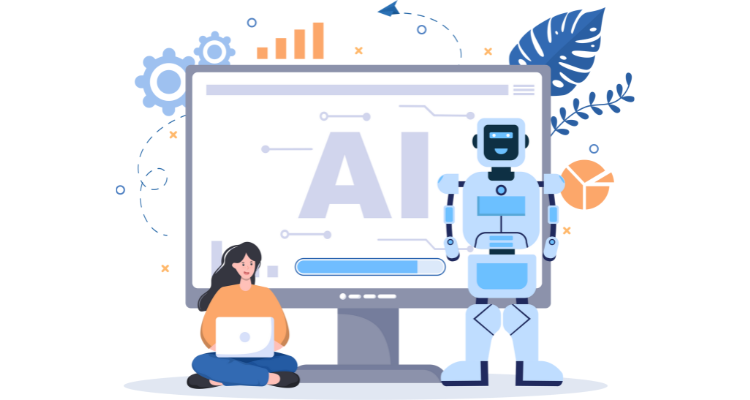Businesses are operating in an era where customers engage across numerous channels, often simultaneously. From social media and websites to mobile apps, SMS, and emails, prospects move fluidly between platforms. Marketers face the challenge of not only being present across these channels but also making sure every touchpoint delivers value.
Simply adding more communication points is not enough. The key lies in orchestrating them intelligently so that the brand message is cohesive, timely, and relevant. Artificial intelligence is transforming this process by allowing companies to understand patterns, predict customer behavior, and optimize campaigns dynamically.
AI-driven multichannel campaigns are no longer optional, they are essential for building meaningful relationships in a crowded digital marketplace.
Table of Contents
ToggleWhy Multichannel Matters
Consumers rarely follow a straight path from awareness to purchase. They may discover a product on social media, research it on a website, receive a promotional text, and finally complete the purchase after opening an email.
A multichannel approach ensures that brands can meet customers wherever they are. Instead of relying on a single channel, marketers can create a web of interactions that guide prospects toward conversion.
The advantages of multichannel outreach include:
- Greater visibility by being present across different platforms
- More opportunities to reinforce brand messaging
- Higher engagement through tailored content in the right context
- Increased likelihood of conversion due to consistent exposure
However, poorly coordinated campaigns risk overwhelming customers or delivering inconsistent messaging. This is where AI steps in to provide clarity and precision.
The Role of AI in Multichannel Campaigns

Artificial intelligence brings order to the complexity of modern outreach. By analyzing massive amounts of customer data, AI systems identify preferences, behaviors, and engagement patterns.
Instead of sending the same message to every channel, AI allows campaigns to adapt dynamically. For example, if a customer responds well to social media ads but ignores SMS, the system can reduce text messages and increase exposure on the preferred channel.
AI also optimizes timing. It can predict when a customer is most likely to open an email, browse a website, or engage with a push notification. Delivering the right message at the right moment makes every touchpoint more effective.
Beyond channel management, AI enhances personalization. Messages no longer feel generic but instead reflect the individual’s interests, location, or stage in the buying journey. This personalization helps reduce outreach fatigue and ensures campaigns feel valuable rather than intrusive.
Integrating Tools for Smarter Outreach
Effective multichannel campaigns require integration across tools and platforms. Data silos prevent AI from seeing the full picture, making it difficult to coordinate touchpoints.
This is where even the cheapest email marketing platforms provide significant value. Not only do they track subscriber behavior such as open rates and clicks, but they also serve as a hub that can integrate with CRM systems, social platforms, and automation tools. When connected to AI-driven analytics, these platforms help coordinate outreach across multiple channels seamlessly.
By centralizing communication data, businesses gain a holistic view of how prospects engage. They can see when someone clicks a social ad, receives an SMS, or opens an email. With AI processing these signals, the next outreach can be personalized and timed precisely to sustain engagement without overwhelming the audience.
Creating a Unified Customer Journey
The strength of AI-driven multichannel campaigns lies in their ability to create a cohesive customer journey. Rather than isolated touchpoints, the campaign becomes an orchestrated sequence that feels natural.
Imagine a prospect discovering a product via a social ad. They visit the website, but do not purchase. AI recognizes the drop-off and schedules a retargeting ad alongside a personalized email reminder. If the email is not opened, a push notification or SMS might follow, depending on the individual’s engagement history.
This seamless flow ensures that every interaction builds on the last. The customer experiences a journey that feels intentional and supportive rather than fragmented.
Personalization at Scale
AI allows for personalization that would be impossible to achieve manually. By analyzing demographics, browsing behavior, purchase history, and even sentiment, AI tailors messages to the individual.
Personalization can take many forms:
- Subject lines that reference past activity
- Product recommendations based on browsing history
- Content tailored to a customer’s stage in the funnel
- Timing aligned with when the individual is most active
The ability to deliver unique experiences at scale is one of AI’s greatest contributions to multichannel marketing. Instead of generic blasts, every touchpoint feels like part of a one-on-one conversation.
The Importance of Timing
Even the most relevant message can fail if delivered at the wrong time. Too many messages in a short period create fatigue, while poorly timed outreach risks being overlooked.
AI models learn from historical engagement data to predict the best times for outreach. If a customer typically opens emails in the evening, the system adjusts delivery accordingly. If another engages with mobile notifications during morning commutes, the campaign adapts.
This precision ensures that every channel is used effectively without creating unnecessary noise. Timing becomes a strategic advantage rather than a guessing game.
Measuring and Refining Campaigns
Multichannel campaigns are complex, and their effectiveness depends on continuous refinement. AI not only executes campaigns but also monitors performance in real time.
Key metrics include:
- Engagement rates by channel
- Conversion rates across sequences
- Drop-off points in the customer journey
- Levels of cross-channel interaction
With this data, AI identifies what is working and where adjustments are needed. Campaigns evolve dynamically, improving over time rather than remaining static.
Reducing Outreach Fatigue
One of the greatest risks in multichannel marketing is overexposure. When customers receive too many touchpoints, they may disengage completely.
AI helps prevent fatigue by monitoring engagement and adjusting cadence. If open rates begin to decline or unsubscribe requests increase, the system reduces frequency or shifts channels.
This adaptive approach ensures that campaigns remain sustainable. Customers receive consistent value without feeling pressured or overwhelmed.
The Role of Segmentation
Segmentation has always been a pillar of marketing, but AI makes it more powerful. Instead of broad categories, AI for marketing tools helps create micro-segments based on nuanced behavior.
For example, rather than grouping all customers interested in fitness, AI might identify subgroups: those browsing equipment, those attending classes, and those looking for nutrition guidance. Each group receives tailored outreach across channels.
This refined segmentation leads to higher engagement, as every touchpoint feels more relevant. AI continually updates these segments, ensuring campaigns stay aligned with evolving customer interests.
Multichannel Synergy
The true power of AI-driven campaigns lies in synergy. Each channel supports the others, creating a unified message.
A typical sequence might look like this:
- A social media ad sparks initial interest
- A website visit captures browsing behavior
- A personalized email provides more details
- A retargeting ad reinforces the offer
- A text message delivers a timely reminder
By weaving these channels together, AI ensures that the brand remains present without becoming intrusive. The result is a balanced, integrated campaign that maximizes every touchpoint.
Challenges and Considerations
Despite the advantages, AI-driven multichannel campaigns are not without challenges. Data privacy remains a concern, and brands must ensure compliance with regulations while maintaining transparency with customers.
There is also the need for human oversight. While AI can optimize timing, content, and channel selection, human judgment is necessary to ensure messaging remains authentic and aligned with brand values.
Finally, integration can be complex. Businesses must invest in connecting platforms and eliminating data silos to realize the full benefits of AI coordination.
The Future of Multichannel Campaigns
As technology evolves, multichannel campaigns will become even more intelligent. AI will not only optimize existing channels but also incorporate emerging ones. Voice assistants, wearable devices, and augmented reality experiences may all become part of the outreach ecosystem.
Campaigns will likely become predictive rather than reactive. Instead of waiting for customer actions, AI will anticipate needs and deliver solutions proactively. Personalization will reach new levels, with messaging that adapts in real time to context and behavior.
The ultimate goal will remain the same: building meaningful relationships. AI-driven multichannel campaigns represent a step toward marketing that feels less like advertising and more like a conversation.
Maximizing touchpoints requires more than being present across channels. It demands coordination, personalization, and timing that align with customer behavior. Artificial intelligence makes this possible by analyzing patterns, predicting outcomes, and optimizing strategies dynamically.
Email marketing platforms, social media tools, CRM systems, and analytics platforms all play a role in providing the data AI needs. When these elements come together, brands can deliver seamless journeys that respect attention while maximizing engagement.
The future of outreach belongs to those who understand that every interaction matters. By leveraging AI to maximize touchpoints in multichannel campaigns, businesses can create experiences that not only drive conversions but also build trust and loyalty for years to come.









